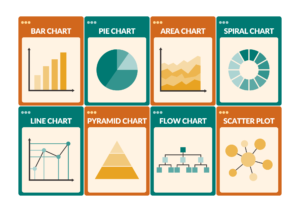Understanding Data: A Beginner’s Guide to Data Science
In the realm of data science, the term “data” serves as the fundamental building block upon which insights, predictions, and decisions are made. Whether you’re just starting your journey into data science or are curious about its significance in today’s world, grasping the concept of data is essential.
What is Data?

Data refers to any collection of facts, observations, measurements, or descriptions that can be processed or analyzed to yield information. It exists in various forms, ranging from numbers and text to images, videos, and beyond. In the context of data science, understanding the types and sources of data is crucial for extracting meaningful insights.
Types of Data

1. Structured Data: This type of data is highly organized and formatted, typically residing in relational databases. It follows a predefined model and is easily searchable, making it suitable for analysis using traditional statistical methods.
2. Unstructured Data: In contrast, unstructured data lacks a predefined data model or organization. It includes text files, images, videos, and social media posts. Analyzing unstructured data requires advanced techniques such as natural language processing (NLP) and image recognition.
3. Semi-structured Data: This type of data lies between structured and unstructured data. It has some organizational properties but does not conform strictly to a rigid data model. Examples include XML and JSON files commonly used in web applications.
Sources of Data
Data can originate from diverse sources:
Transactional Data : Generated from everyday transactions in business operations, e.g., sales records, financial transactions.

Sensor Data: Captured by sensors embedded in devices and equipment, e.g., temperature sensors, GPS data.
Social Media Data: Includes posts, comments, and interactions on platforms like Twitter, Facebook, and Instagram.
Web Data: Information scraped from websites, often used for market research or competitive analysis.
Biometric Data: Includes physiological measurements such as heart rate, blood pressure, etc.
Importance of Data in Data Science
Data serves as the fuel that powers the entire data science process:
1. Problem Formulation : Defining the problem statement and understanding the objectives often begins with data exploration.
2. Data Collection : Gathering relevant and quality data from various sources is crucial for conducting meaningful analyses.
3. Data Cleaning and Preprocessing : Ensuring data quality by handling missing values, outliers, and inconsistencies prepares the data for analysis.
4. Analysis and Modeling : Applying statistical techniques, machine learning algorithms, and data visualization methods to uncover patterns, correlations, and trends.
5. Interpretation and Decision Making : Deriving actionable insights from analyzed data to inform business decisions, policy-making, or scientific research.
Challenges in Dealing with Data
Dealing with data for a website blog presents several challenges that can impact both the efficiency of content management and the overall user experience.
Data Management and Organization: The primary challenge is effectively managing and organizing a large volume of data. Blogs often include various types of content such as text, images, videos, and metadata. Ensuring that all these elements are stored in a structured and retrievable manner is essential. Poor data organization can lead to difficulties in finding and updating content, which can slow down the blogging process.
Data Quality and Consistency: Maintaining high-quality and consistent data is another major challenge. Inconsistent data formats, duplicate entries, and outdated information can degrade the quality of your blog. Regular data audits and cleaning processes are necessary to ensure that the content remains accurate and reliable.
SEO and Metadata: Effective search engine optimization (SEO) requires meticulous attention to metadata, including keywords, tags, and descriptions. Managing this data efficiently is crucial for improving your blog’s visibility and search engine rankings. However, it can be time-consuming and requires a good understanding of SEO best practices.
User Data and Privacy: Handling user data, such as comments, email subscriptions, and personal preferences, comes with the responsibility of ensuring privacy and security. Compliance with data protection regulations like GDPR adds another layer of complexity. Implementing robust security measures to protect user data from breaches and ensuring transparent privacy practices are critical.
Performance and Scalability: As your blog grows, the underlying database and content management system must be able to handle increased traffic and data load. Performance issues can arise if the system is not optimized for scalability. This requires ongoing monitoring and optimization of database queries, server resources, and caching strategies to ensure fast load times and a seamless user experience.
Integration and Automation: Integrating various tools and plugins for analytics, social media sharing, and marketing automation can be challenging. Ensuring these integrations work seamlessly without causing conflicts or performance issues is vital for streamlined operations and effective data utilization.
Conclusion
In conclusion, data is not just a buzzword but the cornerstone of modern-day advancements in technology, business, and research. As you embark on your journey into data science, understanding the nature, types, and sources of data will empower you to harness its full potential. Whether you’re exploring customer behavior, predicting market trends, or advancing medical research, your ability to manipulate, analyze, and interpret data will define your success in the field of data science.
Stay curious, keep learning, and let data guide you on your path to discovery!
Further Reading
For further exploration into the world of data science, consider diving into topics such as data ethics, advanced machine learning algorithms, and emerging trends in data analytics. The journey into data science is rich with opportunities to innovate and contribute meaningfully to the future of technology and society.




